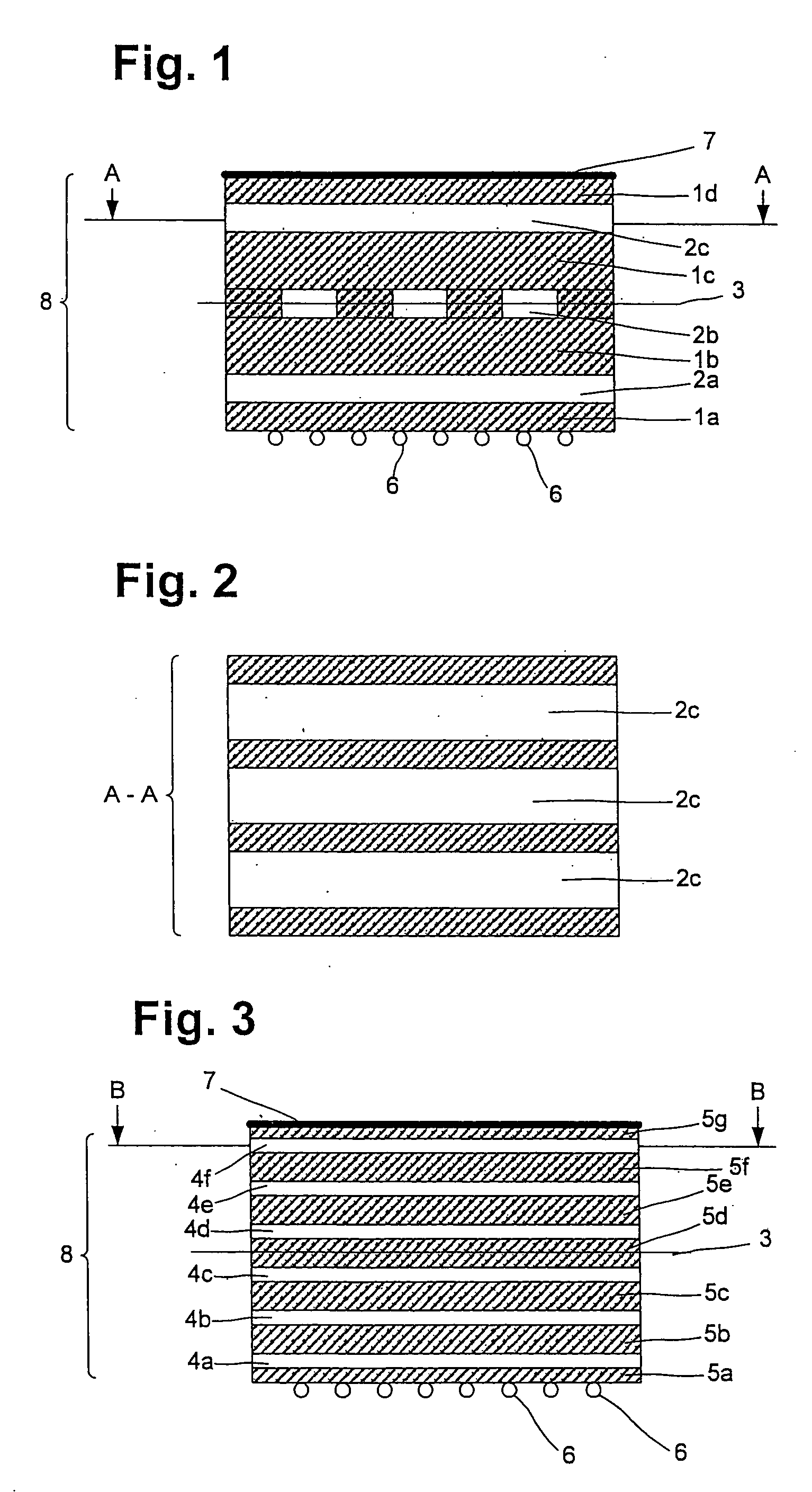Heat shield
a heat shield and shielding technology, applied in the field of heat shields, can solve the problems of difficult to shape stainless steel to such necessary contours, severe force acting on the heat shield, and copper is not very suitable for isolation, so as to prevent the formation of eddy currents, avoid thermal stresses, and save weigh
- Summary
- Abstract
- Description
- Claims
- Application Information
AI Technical Summary
Benefits of technology
Problems solved by technology
Method used
Image
Examples
Embodiment Construction
[0030]FIG. 1 shows a section through a part of a heat shield in accordance with an embodiment of the present invention. The illustrated part represents a detail from the entire heat shield. The body 8 of the heat shield is produced from two or more layers 1a, 1b, 1c, 1d of a glass fibre mesh. Narrow strips 2a, 2b, 2c of a copper sheet are placed between the layers 1a, 1b, 1c, 1d. The strips 2a and 2c run essentially parallel to one another while, in contrast, the central copper strips 2b are arranged at right angles to the sheet-metal strips 2a, 2c and at right angles to the plane of the drawing. Two or more of the copper strips are arranged parallel to one another on a plane at right angles to the plane of the drawing. This is shown by the example of the plane A-A in FIG. 2. The entire arrangement is constructed symmetrically with respect to the plane 3 which runs at right angles to the plane of the drawing.
[0031] Instead of the metal strips 2a, 2b, 2c illustrated in FIG. 1, it is...
PUM
| Property | Measurement | Unit |
|---|---|---|
| thickness | aaaaa | aaaaa |
| thickness | aaaaa | aaaaa |
| thickness | aaaaa | aaaaa |
Abstract
Description
Claims
Application Information
 Login to View More
Login to View More - R&D
- Intellectual Property
- Life Sciences
- Materials
- Tech Scout
- Unparalleled Data Quality
- Higher Quality Content
- 60% Fewer Hallucinations
Browse by: Latest US Patents, China's latest patents, Technical Efficacy Thesaurus, Application Domain, Technology Topic, Popular Technical Reports.
© 2025 PatSnap. All rights reserved.Legal|Privacy policy|Modern Slavery Act Transparency Statement|Sitemap|About US| Contact US: help@patsnap.com


